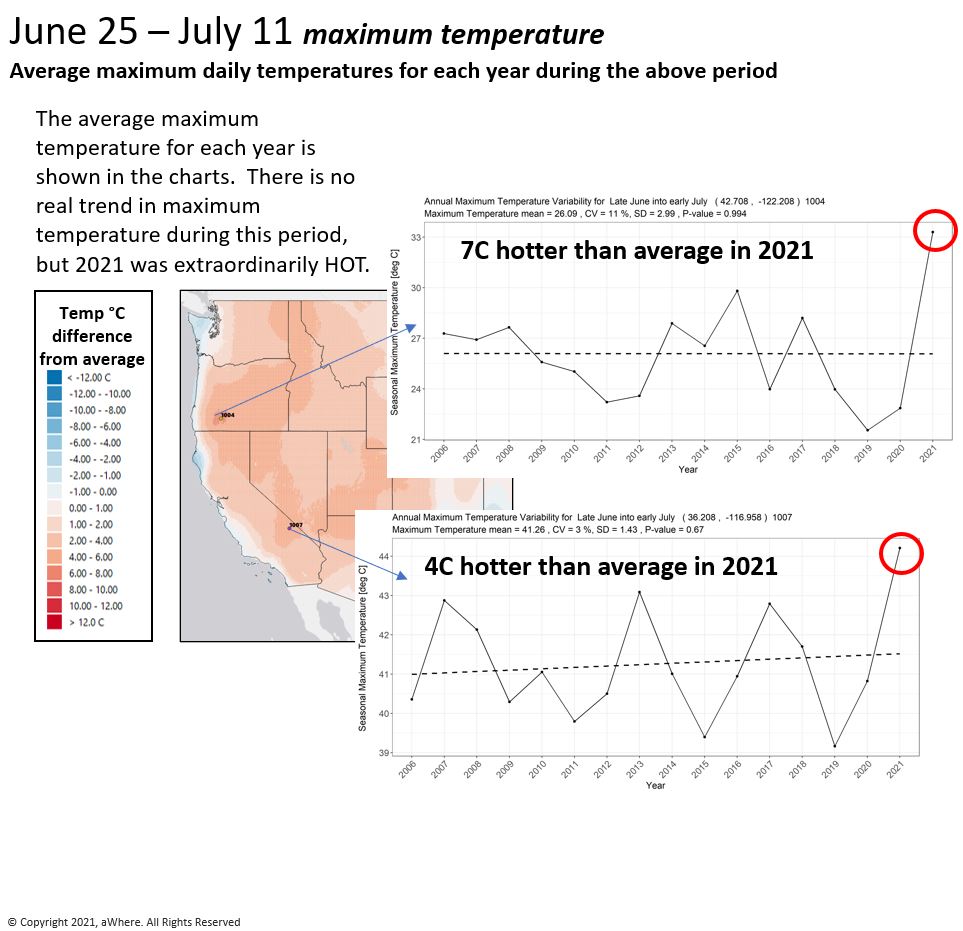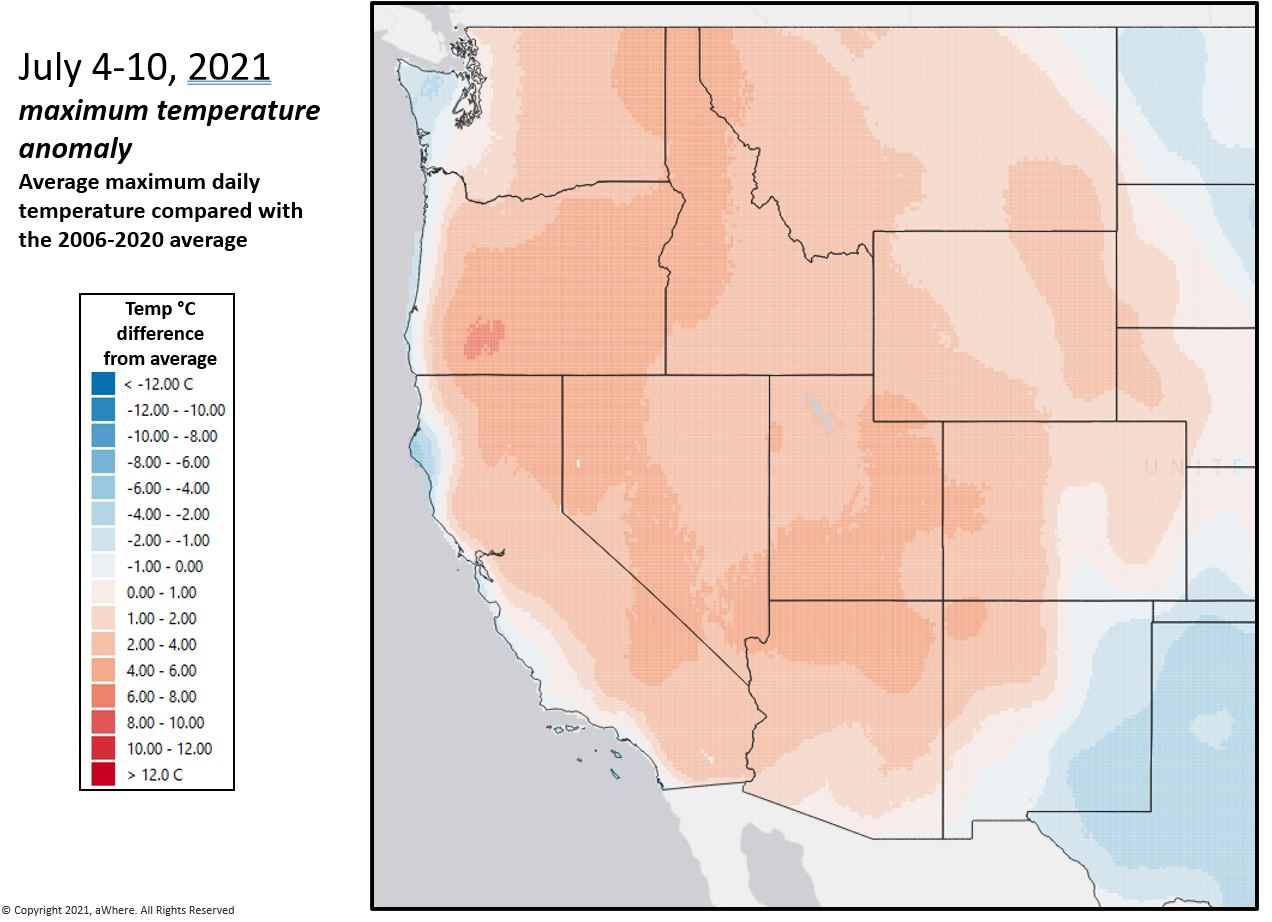
The unprecedented heat wave moving across the Pacific Northwest demonstrates the harsh realities of our changing climate. Record high temperatures across the region have killed hundreds as resources to stay cool run low, and cities encourage residents to save as much energy as possible. In Oregon alone, the health authorities have reported 633 heat-related trips to the emergency department and 63 people have died in the state. Intense drought across the afflicted regions has only heightened the extremity of these triple degree days.

When the 2021 heat wave was compared to an analogue of aWhere’s historical weather data, large differences between the long-term normal and the experienced temperatures were observed. The region is not adapted to handle such intense heat, and people are facing severe repercussions as a result. In just the past few weeks, the town of Lytton in British Columbia saw the record breaking temperature of 121 degrees, while Death Valley, notoriously recognized as the hottest place on Earth, reached a temperature spike of 130 degrees a mere 4 degrees away from the world record. Exposure to this degree of extreme heat can have significant and frightening impacts on both humans and their environment. According to the World Health Organization between 1998 and 2017 over 166,000 have died from heat waves, demonstrating the severity of these temperature extremes. Cites are a particular concern due to a phenomenon known as the urban heat island (UHI). The materials and surfaces in urban areas are more apt to hold onto heat, resulting in cities acting with an insulating effect to heat exposure, exacerbating temperature extremes. This is a huge concern given the dense populations of urban areas.

Outside of human concerns, our water, air, and agriculture systems are also strained by heat waves. Research out of the University of Colorado Boulder found that these extreme temperatures may have up to ten times the crop damage than previously expected. The study looks at a cumulation of historical global data from 1979 to 2016, and is able to demonstrate the increasing magnitude of crop-loss extremes experienced by farmers over time. This massive increase from expected damage levels further demonstrates the extremes we are facing in light of climate change. In collaboration with the NCDC, NOAA, Cooperative Institute for Meteorological Satellite Studies–Wisconsin, and the Cooperative Institute for Climate and Satellites–North Carolina, researchers found that heat waves cause air to become stagnant, and trap pollutants emitted during the wave, often increasing surface level ozone and further insulating temperatures. Heat waves also dry out vegetation in the local area, increasing the availability of easily burnable groundcover, and perpetuating the frequency of wildfires, where smoke presents a serious health hazard.
While this blog focused on a lot of the negative impacts of heat waves, and their increased frequency with climate change, there are actionable measures we can take to adapt our world to these changes and protect our future. NASA recommends taking a mitigation (reduction of impact) and adaptation (adjustment to current/inevitable changes) approach to help adjust to these climatic shifts. Some suggested changes include collective movements to renewable energy sources, carbon capture/ sequestration/ storage measures, and advocating for policies to support our planet.
To learn more about the data behind this article and what aWhere has to offer, visit https://www.awhere.com/.







Sign up to receive our stories in your inbox.
Data is changing the speed of business. Investors, Corporations, and Governments are buying new, differentiated data to gain visibility make better decisions. Don't fall behind. Let us help.













Sign up to receive our stories in your inbox.
Data is changing the speed of business. Investors, Corporations, and Governments are buying new, differentiated data to gain visibility make better decisions. Don't fall behind. Let us help.





